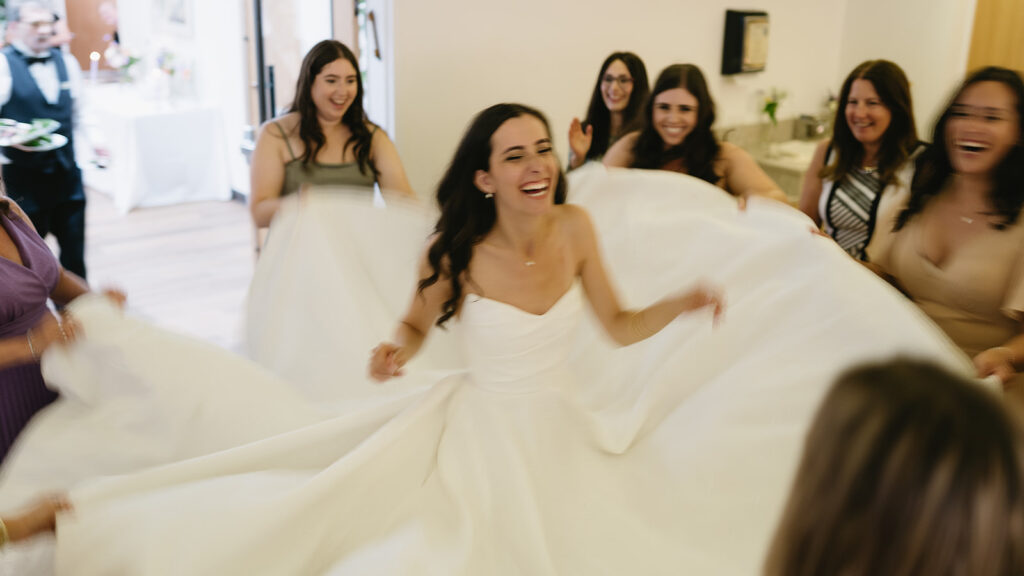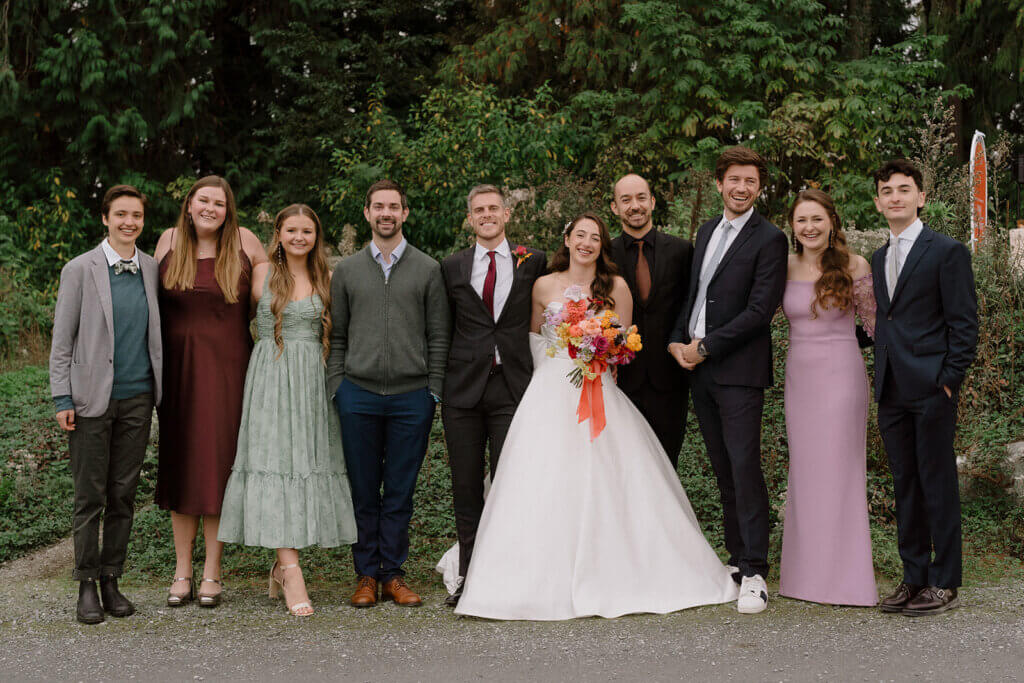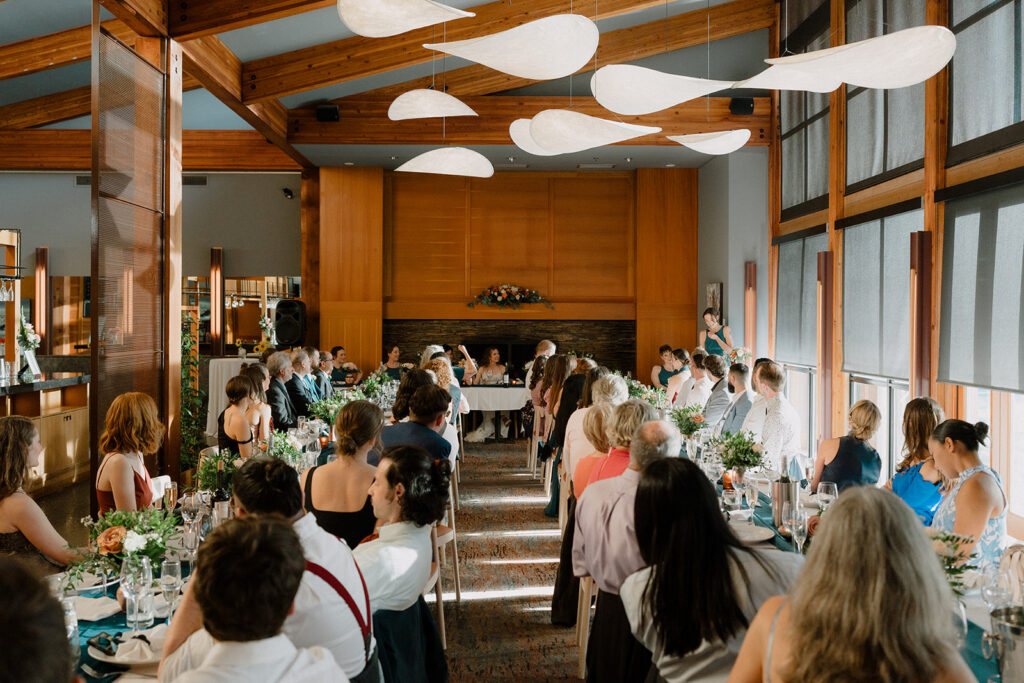Your wedding day is one of the most important days of your life, and having a well-planned timeline ensures that everything flows smoothly. From getting ready in the morning to your grand exit, a structured timeline allows you to be present in the moment without worrying about logistics.
In this guide, I’ll walk you through each step of crafting a wedding day timeline that minimizes stress and maximizes joy. Whether you’re working with a wedding planner or DIY-ing your schedule, these tips will help you create a seamless experience ❤️

How to Build a Perfect Wedding Day Timeline
1. Start with Your Ceremony Time
The foundation of your wedding timeline is your ceremony. Once you know when you’ll be saying “I do,” you can work backward and forward to structure the rest of the big day. I typically recommend planning your ceremony sometime between 2 PM – 4:30 PM. In most cases the ceremony is a maximum of 30 minutes long.
2. Consider a First Look (Or Not!)
A first look—where you see each other before the ceremony—can be a great way to calm nerves. However, if you love the idea of seeing each other for the first time at the aisle, this is not something you need to incorporate. If you do opt for a first look, plan at least 30 minutes for the moment and some pictures together after. Plan for more time if you intend to incorporate private vows during this time.
Sample Timeline with a First Look:
| Time | Activity |
| 9:00 AM | Hair & makeup begins |
| 11:30 AM | Getting ready photos |
| 12:30 PM | Wedding party and couple gets dressed |
| 1:30 PM | First look & a few couple portraits |
| 3:00 PM | Ceremony starts |
| 3:30 PM | Family photos |
| 4:00 PM | Wedding party photos + Newlywed portraits |
Sample Timeline Without a First Look:
| Time | Activity |
| 10:00 AM | Hair & makeup begins |
| 12:30 PM | Getting ready photos |
| 1:30 PM | Wedding party and couple gets dressed |
| 3:00 PM | Ceremony starts |
| 3:30 PM | Family photos |
| 4:00 PM | Wedding party portraits + Newlywed portraits |
3. Getting Ready: Give Yourself Buffer Time
Hair and makeup often take longer than expected. Include generous travel time during your wedding planning also. To avoid feeling rushed, schedule extra time between getting ready and heading to your first event of the big day.
Pro Tip: Ask your stylist and/or makeup artist how long they expect hair and makeup to take per person, then add at least 30 extra minutes.
4. Family Portraits: The Perfect Amount of Time
When planning your family portrait time (usually right after the ceremony), make sure to allot enough time for not only taking the group photos, but possibly tracking down some missing family members/escapees! Wedding photographers are all different, but I personally feel that 10-15 combinations is the ideal number. More than that can get logistically complicated. Planning for 2 minutes per grouping will give you an idea of how long you’ll need to schedule.
Pro Tip: Make sure to delegate a friend or family member as ‘Official Family Photo Manager’. This person should have the family photo shot list with them on the big day (a printed version is ideal) and call out the names of each grouping as you go, to keep everything efficient and on track.
Second Pro Tip (omg, there’s more??): Have your officiant announce at the beginning or end of the ceremony that family photo photos are next, so your family members are less likely to wander away.

Commonly Overlooked Timeline Details
1. Travel Time Between Locations
If your getting-ready location, ceremony, and/or reception are in different places, make sure to account for travel time (and potential traffic!).
2. Sunset Timing for Golden Hour Photos
The best light for dreamy, golden portraits happens about an hour before sunset. Check your wedding date’s sunset time and schedule at least 15–30 minutes for couple’s portraits towards the beginning or middle of the golden hour. This is usually enough time to get stunning portraits!
3. Buffer Time for the Unexpected
Weddings rarely go exactly according to plan. Be a wedding planning pro and factor in 5–10 minutes of extra time between major events keeps things flexible and stress-free.
Crafting Your Reception Timeline
Once the ceremony is over, the party begins! Here’s a typical reception flow, incorporating many traditional elements (feel free to customize and make your wedding planning personalized to you. You don’t need to do all these things!):
| Time | Event |
| 5:00 PM | Cocktail Hour Begins |
| 6:00 PM | Guests Seated & Grand Entrance |
| 6:15 PM | Dinner Service Starts |
| 7:30 PM | Speeches/Toasts & Cake Cutting |
| 8:30 PM | First Dance, Parent Dances & Open Dance Floor |
| 11:00 PM | Grand Exit & Send-Off (Sparklers?!) |
Final Takeaways for Creating a Stress-Free Wedding Timeline
- Start early. The more time you give yourself in the morning, the more relaxed you’ll feel.
- Communicate with vendors. Share your timeline with your wedding photographer, wedding planner, wedding venue, DJ, videographer, florist and caterer so everyone is aligned. Ask your trusted vendors for their opinion on how long things take, and if they feel your timeline is accurate and manageable.
- Delegate tasks and time-keeping. Assign a friend, family member, wedding party member or coordinator to help manage the schedule so you can focus on enjoying the day. Avoid any wedding planning day-of.
- Build in a moment to breathe. Plan a private moment with your partner to soak it all in. After your first look, or after your ceremony is a good time for this!
A well-planned timeline is the key to a stress-free wedding day—and having a wedding photographer who understands your vision is just as important. If you’re looking for a wedding photographer who will capture every moment with warmth and authenticity, I’d love to chat!
Contact me today to start planning your wedding photography experience!

FAQs: Creating a Stress-Free Wedding Day Timeline
1. How long should my wedding ceremony be?
Most wedding ceremonies last between 20-30 minutes. If you’re including special readings, religious elements, or personal vows, it may extend to 45 minutes. Keeping the ceremony concise ensures guests remain engaged and the timeline stays on track.
2. Should I have a first look before the ceremony?
A first look can be a great way to ease nerves and capture intimate couple portraits before the ceremony. It also helps streamline your photo timeline, allowing more time for couple portraits before the reception. However, if you prefer a traditional aisle reveal, you can plan for all photos after the ceremony instead.
3. How much time should I set aside for getting ready?
Allocate at least 2-3 hours for hair, makeup, and getting dressed, depending on your wedding party size. Ask your stylist for an estimate per person and add an extra 30 minutes as a buffer to prevent any delays.
4. What is the best time for golden hour wedding photos?
Golden hour occurs approximately an hour before sunset, offering the most flattering natural light for romantic portraits. Check your wedding date’s sunset time and schedule 15-30 minutes for golden hour photos to capture stunning, warm-toned images.
5. How can I ensure my wedding day timeline runs smoothly?
Start with your ceremony time and work backward to build your schedule. Communicate your timeline with vendors, add buffer time for unexpected delays, and delegate time management to a trusted friend or coordinator. This ensures a stress-free and seamless wedding day.
How to Create a Stress-Free Wedding Day Timeline
Paragraph